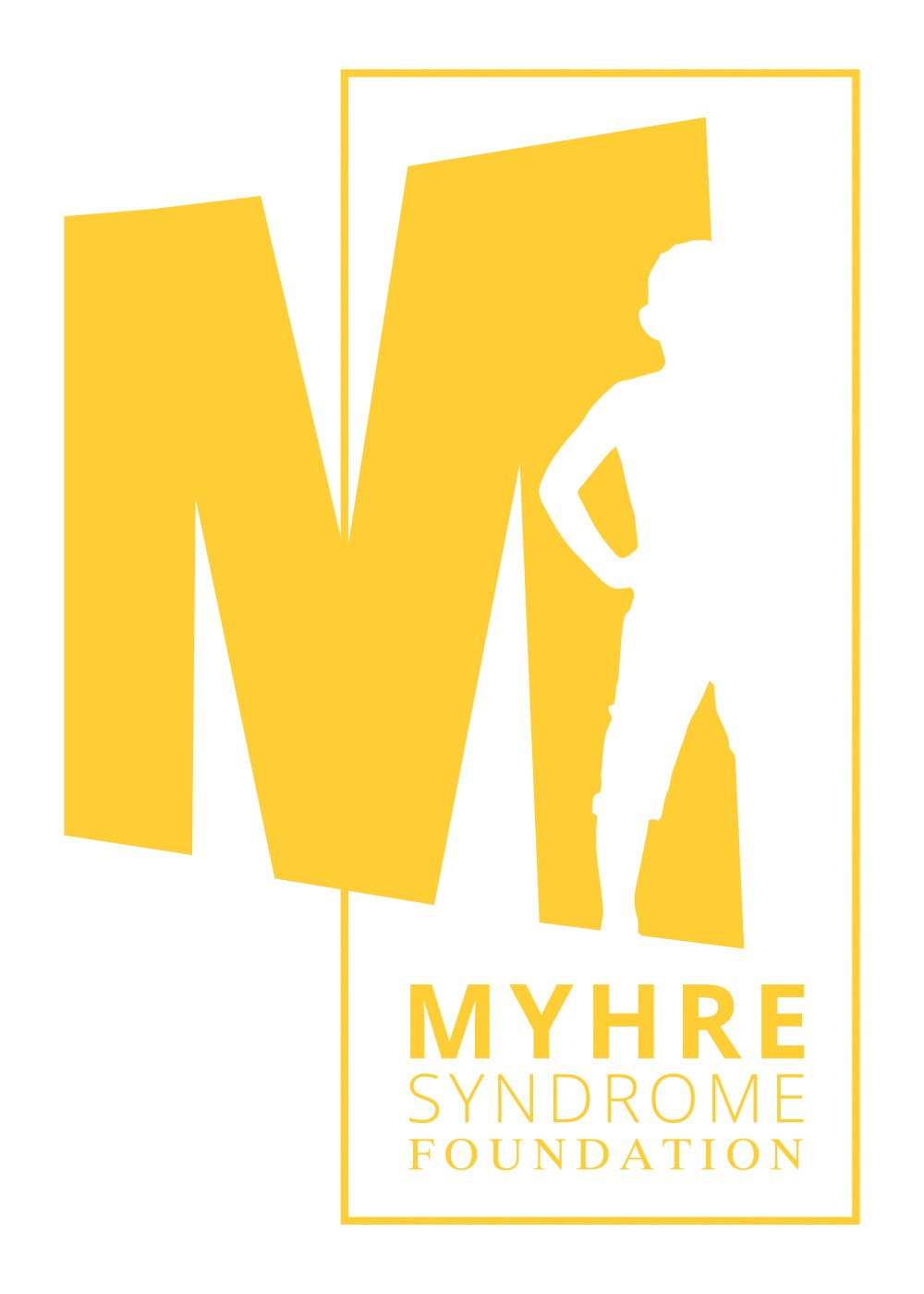What is Myhre Syndrome?
Although the correct pronunciation of this Norwegian name is more like MEER-a or M-yureh, Dr. Myhre used a version common in the United States, MY-ree. Myhre syndrome is an extremely rare genetic disorder, caused by a mutation in the SMAD4 gene. In Myhre Syndrome this mutation is referred to as a de novo mutation because it happens by chance. It is not caused by anything a parent did or didn’t do.
Myhre syndrome is unique because the change causes the SMAD4 gene to work more rather than slow it down. When this happens, it is called a gain-of-function mutation. Of the many body systems which are affected, the skin is usually firm, and scars can become thick. There is also a risk in some people to have scar tissue (fibrosis) with surgery. Joints are stiff, and can progress to contractures or arthritis. The rib cage is stiff (restrictive). Affected individuals often have problems with the cardiovascular and respiratory systems. Some of these problems gradually get worse and can lead to potentially life-threatening complications. Currently there is no cure.
Every person who has Myhre syndrome is slightly different. Some common characteristics include:
Short stature
Characteristic facial features, such as small eyes, small mouth or prominent chin
Intellectual disability and/or autism
Hearing loss
Limited joint mobility
Problems with lungs and airways
Problems with heart and blood vessels
Thickened skin
Every case of Myhre Syndrome is unique and individuals may not have all of the symptoms listed bove. The treatment of Myhre syndrome is directed toward the specific symptoms that are present in each individual and requires comprehensive, coordinated efforts of a team of specialists that could include primary care physicians, cardiologists, pulmonologists, geneticists, orthopedists, otolaryngologists, ophthalmologists, endocrinologists, gastroenterologists, nephrologists, physiotherapists and other healthcare professionals.
Parents should talk to their children’s physician and medical team about their specific case, associated symptoms and overall prognosis. Early diagnosis and intervention and regular follow up are essential to ensuring children and adults with Myhre Syndrome are able to live their fullest lives.
Life Expectancy
Life expectancy is often one of the first questions that is asked following a diagnosis and is something that we hear in our community groups and is searched for online. We feel it is important for this topic to be addressed with as much sensitivity as possible, and our goal is that you are informed.
It is well known to those with Myhre syndrome, and their families, that individuals are affected by differences in organs, tissues, and their function. While some of these differences can affect comfort and quality of life, others can be life limiting, and people with Myhre can live shorter lives than people who do not have Myhre.
Understanding these differences is essential to finding therapies and interventions that might improve outcomes in those with Myhre syndrome. In that effort, it is of great importance to be able to evaluate tissues and organs after the heartbreaking passing of a child or adult with Myhre syndrome.
Autopsies (or postmortem examinations) help a family to bring closure, if there was any question about the end of life, or to confirm what was suspected. In addition to helping the family, an autopsy can advance understanding of the disorder, and allow clinicians to better understand disease progression, improve management and potentially help other patients in the community. This examination would always be done with reverence and respect.
We have listened to you, and created a handout that has further information about the process of conducting an autopsy and how the Myhre Syndrome Clinic team and PAB members can help with this process.
Please contact kwears@myhresyndrome.org to be sent a copy.
Thank you for considering this difficult but important topic.



